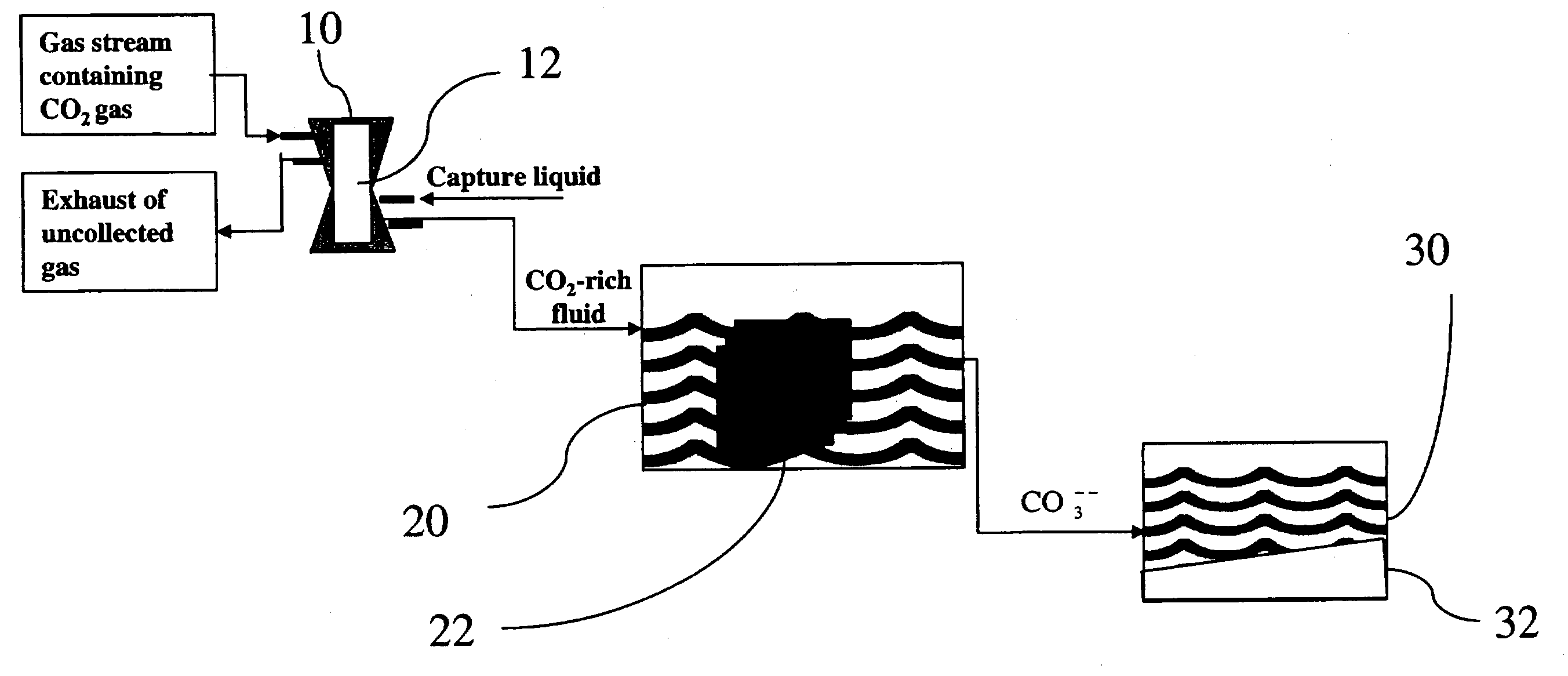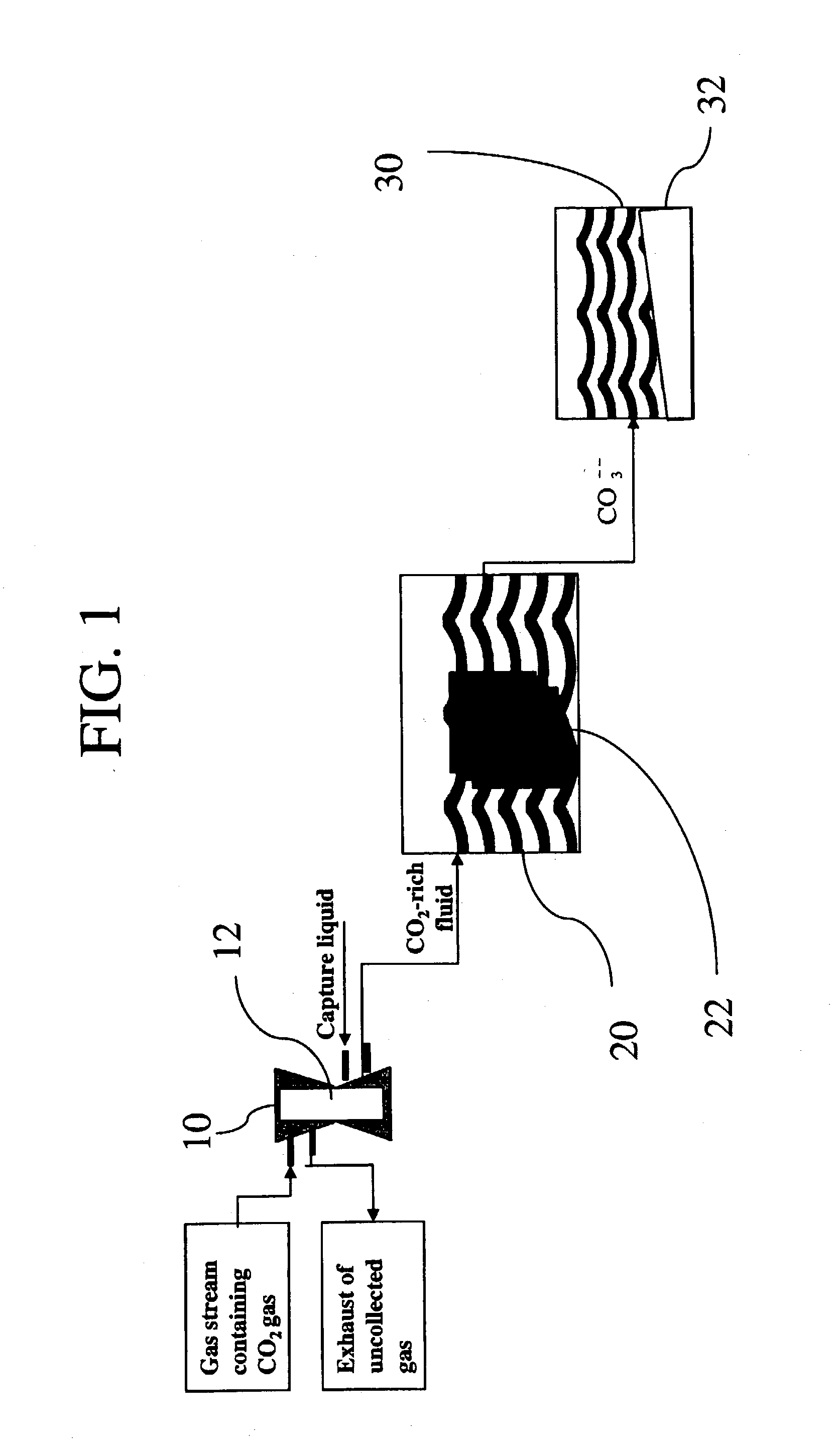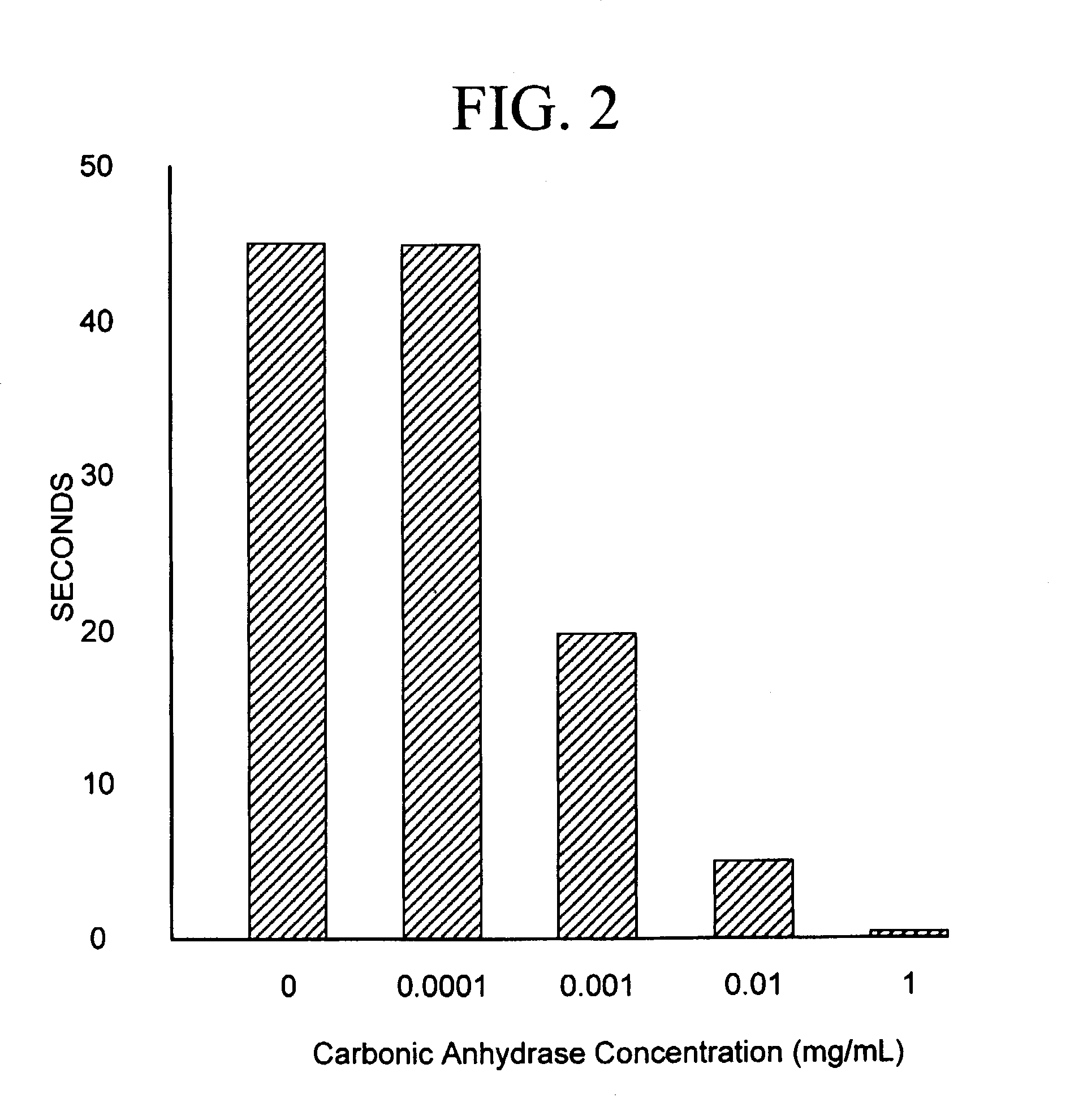Sequestration of carbon dioxide
a carbon dioxide and carbon dioxide technology, applied in the direction of hydrogen sulfide, separation process, alkali metal carbonate, etc., can solve the problems of corrosive nature, major ecological and economic problems, and create operational, economic and environmental problems
- Summary
- Abstract
- Description
- Claims
- Application Information
AI Technical Summary
Benefits of technology
Problems solved by technology
Method used
Image
Examples
example
[0024]A gas exchange module containing a gas diffusion membrane was connected to a gas stream containing 10–40% CO2. The gas flow was regulated between 1 and 9 L / min and the backpressure was maintained at 5 PSI. The gas exchange module was simultaneously connected to a water supply which was used to dissolve the CO2. The flow of the water varied from 1–9L / min while the pressure was maintained at 10 PSI. At a CO2 concentration of 30%, a gas flow of 7 L / min, and a water flow of 7 L / min, 75% of the mass of CO2 gas from the feed stream was continuously collected into the water. Measurement of the CO2 dissolved in the water indicated that 80–200 ml / L of CO2 was present in the water as dissolved CO2. The 25% of CO2 that was not captured was released as exhaust. The water with the dissolved CO2 then flowed over the carbonic anhydrase that was attached to a matrix and totally converted to carbonic acid. A 1 M solution of NaOH or KOH was then added to the solution at a rate of from 4–220 ml / ...
PUM
 Login to View More
Login to View More Abstract
Description
Claims
Application Information
 Login to View More
Login to View More - R&D
- Intellectual Property
- Life Sciences
- Materials
- Tech Scout
- Unparalleled Data Quality
- Higher Quality Content
- 60% Fewer Hallucinations
Browse by: Latest US Patents, China's latest patents, Technical Efficacy Thesaurus, Application Domain, Technology Topic, Popular Technical Reports.
© 2025 PatSnap. All rights reserved.Legal|Privacy policy|Modern Slavery Act Transparency Statement|Sitemap|About US| Contact US: help@patsnap.com



